Looking after the majestic birds of our heathlands
March 11, 2021
Olivia French is an Engagement Officer for the Heathlands Reunited project and shares four of her favourite bird species – and offers tips on how we can all help protect them!
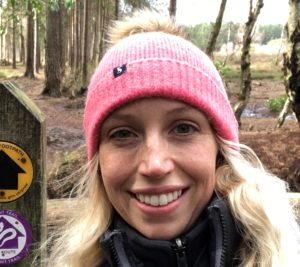 March sees the start of ground-nesting bird season when an array of avian species make their homes on the ground. South Downs heathland is home to a number of beautiful birds that choose the protection of the heather, gorse and soft sandy soil to lay their eggs and raise their young.
March sees the start of ground-nesting bird season when an array of avian species make their homes on the ground. South Downs heathland is home to a number of beautiful birds that choose the protection of the heather, gorse and soft sandy soil to lay their eggs and raise their young.
Nightjar
A master of camouflage, the nightjar is a ground-nesting bird that migrates long distances from Africa to breed and nest on our heath in late April. Their plumage is a grey brown colour and makes for perfect camouflage on the heath. They feed on nocturnal insects such as flies, moths and beetles, using the hairs around their mouths to detect their prey’s wingbeats. During breeding season males put on quite a show by making a unique “churring” sound and loudly clap their wings together to mark their territories. Females lay their eggs directly onto the bare ground and then use their camouflage to blend perfectly into their surroundings.
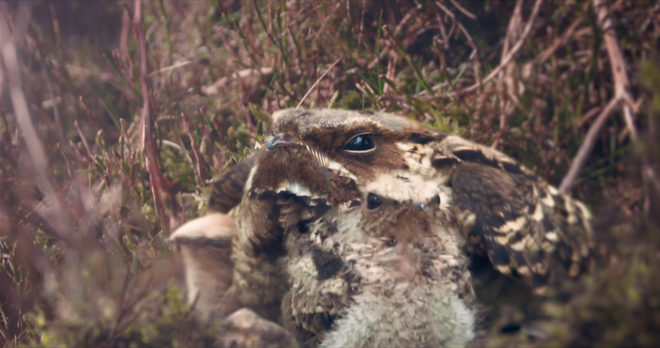
Dartford warbler
A small brown bird often found singing its scratchy song from the tops of gorse bushes it resides on our heaths all year round. It has a distinctive red eye ring, rusty breast and long tail. The Dartford Warbler begins nesting in April and builds its nest on the ground amongst dense heather and gorse. Both males and females help to build the nest and females often have two or three broods a year.
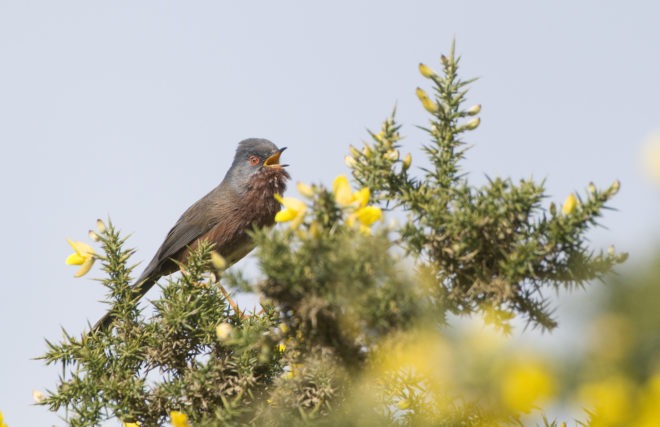
Woodlark
The woodlark is another bird which builds its nest on the ground on the heath in the south of England. It is a small mottled brown bird with a distinctive black and white mark on the edge of its wings. The secretive woodlark can be hard to spot. It nests on the ground on our southern heathlands and uses scattered trees and woodland edges for lookout posts. Their musical song can be heard by day or night, particularly between March and August. These birds nest earlier in the year than others, sometimes before the end of March and females can raise several broods each year.
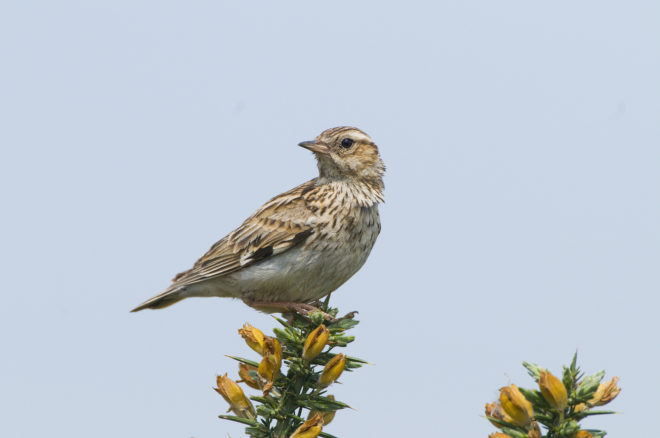
Stonechat
Listen out for this bird on the heath, named stone chat due to their song sounds like two stones being hit together. This bird is a little smaller than a robin male and has a black head with an orange red chest. Highly territorial, males are often seen sitting on top of trees, power lines and gorse. Females build their nests under or in gorse bushes and pairs rear two or three broods per season.
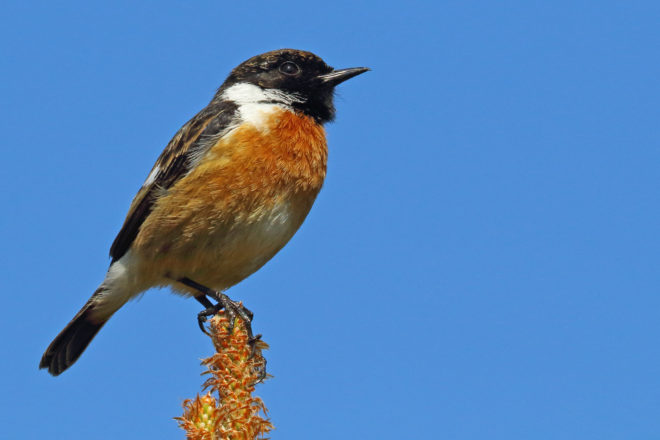
All of these birds rely on lowland heath to survive. For years the lowland heath in Britain was considered a wasteland and much of this habitat was lost due to development, farming and plantations. Heathlands Reunited is a partnership of 11 organisations, led by the South Downs National Park Authority and is working to restore the heath for these vulnerable species.
How can you help?
These species of groundnesting birds are particularly vulnerable to disturbance. Their camouflage makes them difficult to notice and inquisitive dogs can trample nests or frighten the birds into abandoning their nests.
As a result, during the season from March to September, please keep your dog on a lead and stick to the paths while walking on the heath to help protect them for future generations to admire 🙂

